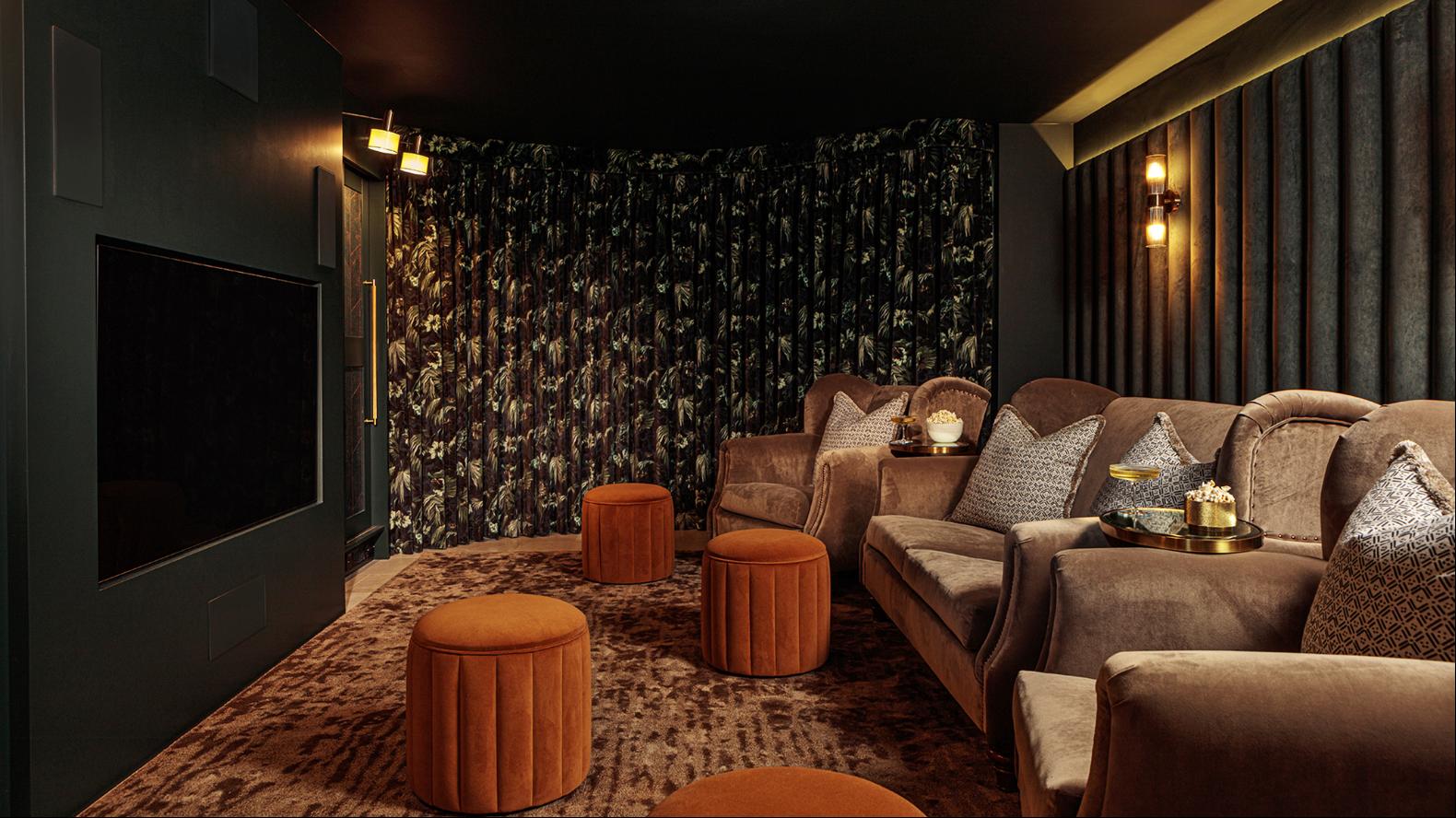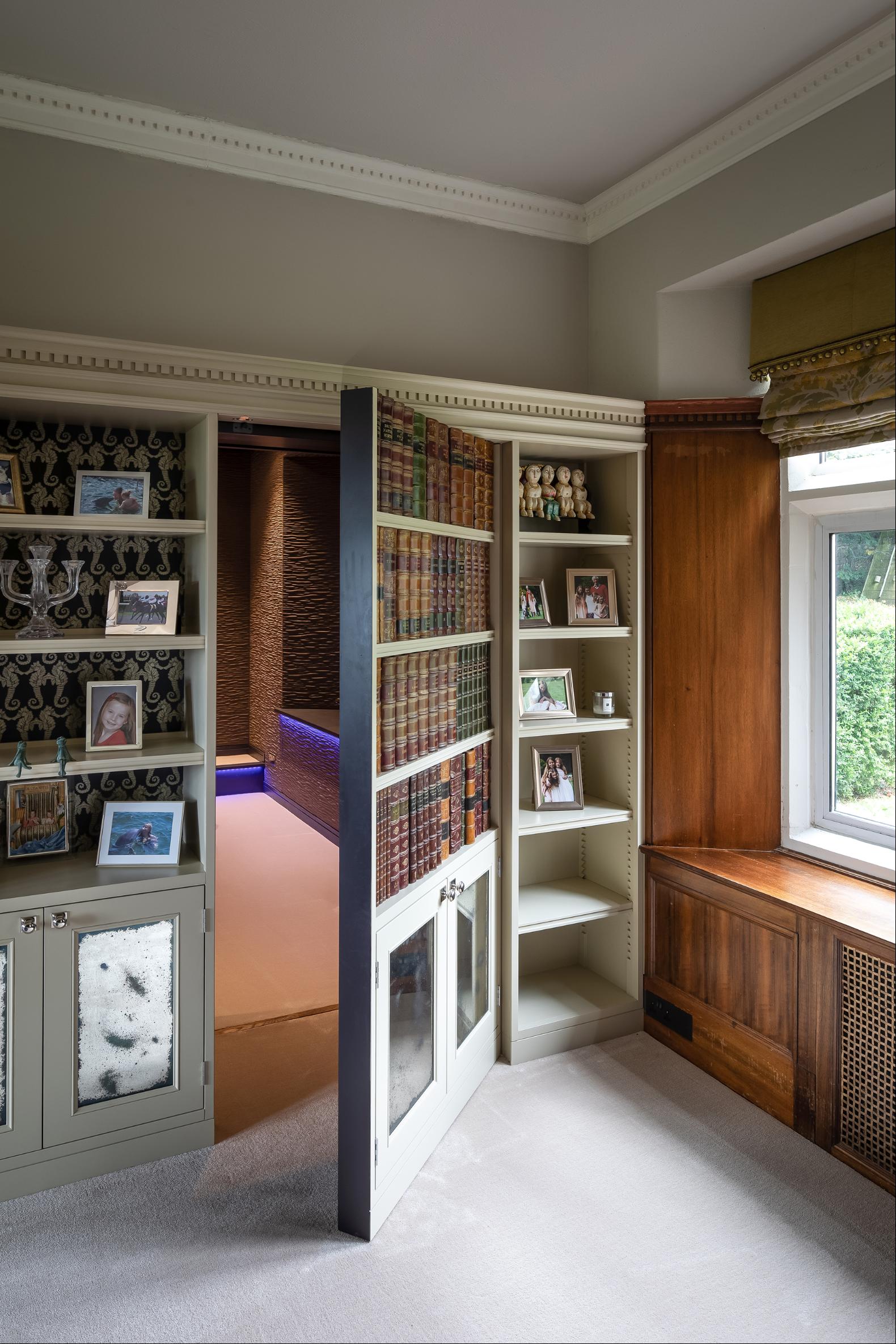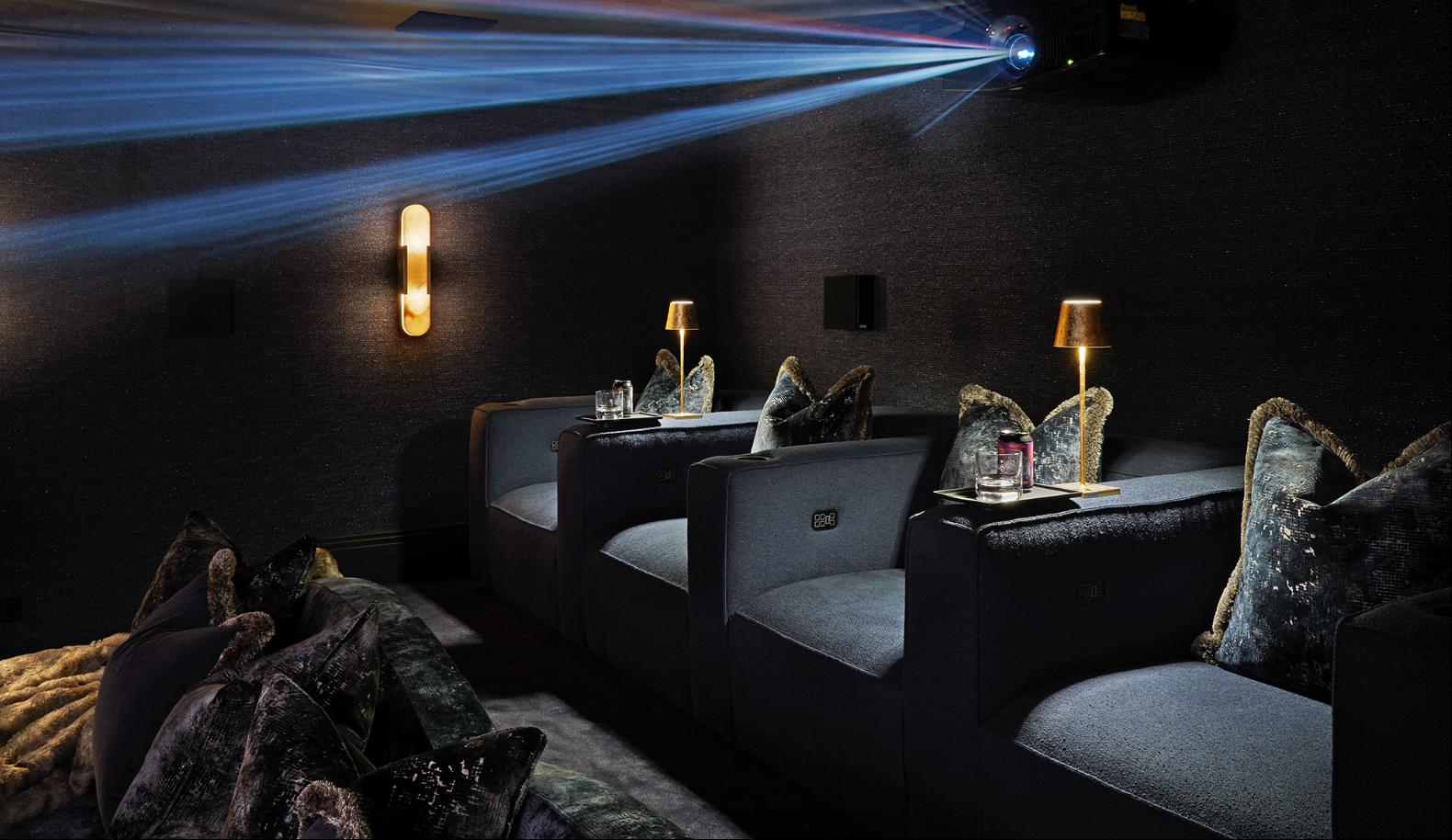
By Hannah Keegan
Hidden behind a bookshelf in the library of a stately Edwardian home, a secret door leads to a dark, glamorous room with a large panoramic screen. “It had previously been a ballroom that had become a bit of a dumping ground,” says Charlie McCourt, co-founder of Equippd, an ultra-high-tech design firm specialising in smart homes. “The owners had started a cinema club with their friends and wanted to convert it. We designed it so you pull on one of the books on the shelf and the door opens. It’s incredible.”
The market for home cinemas is booming. This is just one of many projects Equippd has recently completed, and demand for McCourt’s small team increases year on year. It’s easy to see why. As our love of streaming platforms increases — and with many films now going straight to streaming — a high-end home viewing experience is both luxurious and convenient.

That said, designing a home cinema correctly is no easy feat — it’s a sophisticated technical endeavour as much as it is an aesthetic one. “Common mistakes often stem from neglecting the technical complexities involved. Without proper attention to detail, elements such as soundproofing and room layout can significantly compromise your viewing,” says Helen Bygraves, director of interior design firm Hill House Interiors. “Inadequate soundproofing, for example, can lead to sound leakage, disturbing other areas of the home.”
So how do you avoid rookie errors when building your own? Firstly, don’t overlook the level of tech you’ll need. When it comes to the screen, McCourt advises giving thorough consideration to how you’ll use the space. Do you see it more as a “media room” ready to host friends to watch the football, or is it an atmospheric cinema space separate from the rest of the home? For the latter, he recommends a film projector rather than a television screen. “A typical TV can be too bright, whereas a projector allows for more darkness and ambience. With a projector, the screen is also wide enough to be watched in CinemaScope, the way you would in a professional cinema.”
In terms of speakers, the positioning is crucial. “The minimum for a cinema experience is what we call a 5.1.2 set-up, so five is the number of speakers — three at the front of the room, two at the back — then a subwoofer, which delivers the bass, and another two more speakers on the ceiling. This allows for the sound to come from all around you,” explains McCourt.
And with all that surround sound, you’re going to want soundproofing. “There are lots of clever ways to do it well. We treat different parts of the walls with a specific material to improve the acoustics — reduce vibrations, reduce reflected sound and enhance the bass. But if you don’t have the opportunity to strip back the room and do this, there are acoustic panels you can add to the wall to help,” he says.

Of course, the design of a room you will want to relax in is also paramount. “High-quality blackout curtains and blinds are an absolute must, and you shouldn’t be afraid to opt for a darker colour scheme on the walls and ceiling. A cinema room suits a moody environment, and lighting is key to creating the perfect ambience,” says Bygraves.
Though you should keep these technical considerations in mind, it’s also important for your room to look and feel exactly how you want it to — there’s no “right” aesthetic for a cinema room, after all. “A recent project converted a basement space in a Regency house into a plush cinema room with influences from the glamour of the 1920s and Art Deco. For these clients, their priority was aesthetics, with a relaxed but sophisticated atmosphere,” says interior designer Eloise Pfeiffer.
“If you’re looking to upgrade a cinema room that already exists, one of my favourite tips is to add wall cladding — it’s a beautiful, non-invasive way to hide cabling, provide sound proofing, and can even be added purely to update the aesthetic of the room,” she adds. Happy watching.
Photography: Pfeiffer Design / www.pfeifferdesign.co.uk; Ryan Wicks / Equippd; Hill House Interiors












